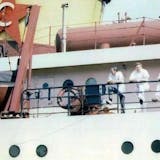St. Louis Park will have a little less unexplored territory come summer, when a previously inaccessible wetland is opened to the public with trails, canoe landings and other amenities.
The city and the Minnehaha Creek Watershed District are installing 1.3 miles of boardwalks, bridges and paved trails in a broad wetland that for generations had been literally an urban backwater, surrounded by low-rise office and warehouse buildings and Excelsior Boulevard. The area was bisected by the creek, which had been straightened to function primarily as a drainage ditch.
"For too long, cities have turned their backs on the creek," said St. Louis Park city manager Tom Harmening. "Those times have changed. Now we've turned to the creek."
A key feature of the as-yet-unnamed area, which will be accessible from Creekside Park, will be new bends in the creek as it travels through the 27-acre spread between Meadowbrook Road and Louisiana Avenue.
The $850,000 "re-meander" is funded both by the city and the MCWD using money from the state's Clean Water Fund. It is intended to slow down the creek, reducing erosion, while the surrounding wetland filters pollutants out of runoff flowing into the creek.
Eric Evenson-Marden, the MCWD administrator, said the redone section has been the most polluted stretch of Minnehaha Creek, which travels 22 miles through five cities from Lake Minnetonka to the Mississippi River.
Harmening emphasized that the project, which abuts a similar re-meander and boardwalk installation just downstream, next to Methodist Hospital, will fit neatly into St. Louis Park's long-range plans to enhance trail connections between parks, housing, jobs and transit.
The wetland network will be just southwest of a planned station on the Southwest Corridor light-rail line, and, by the same token, a stone's throw from the popular Cedar Lake LRT Regional Trail.


